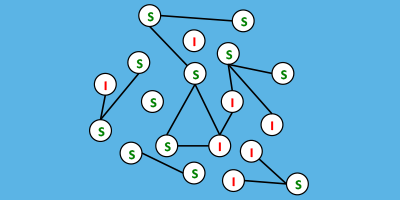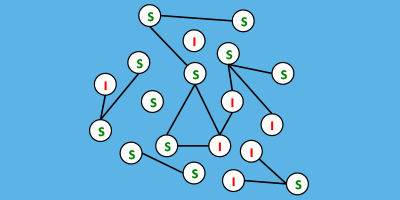Stopping the Spread
In a world where we travel frequently—whether on short commutes to work or on longer leisure and business trips—infectious diseases can potentially spread over large distances on very short time scales, as happened in the 2009 H N flu pandemic. Health authorities have a number of measures at their disposal to halt the spread of diseases, such as quarantine, vaccination, or support for the use of protective equipment like flu facemasks. Alessandro Rizzo from New York University Polytechnic School of Engineering and Politecnico di Bari, Italy, and colleagues performed mathematical modeling to quantify the effectiveness of behavioral changes in halting the spread of infections.
The group used a model based on an interacting network of infected and susceptible individuals. They looked at two types of behavior that could emerge in response to two disease types: respiratory infections and sexually transmitted diseases. The first was focused on reducing “activity” (how much individuals interacted with their neighbors), e.g., through quarantine, restricting travel, or avoiding contact between the ill and the healthy. In the second, “susceptibility” was the main variable: healthy individuals adopted protective measures based on their risk perception. The model allowed the authors to quantitatively relate various behavioral changes to disease propagation. As expected, reducing the activity of healthy or infected individuals slowed down the spread of an infection, decreasing the likelihood of an epidemic. Protective measures also worked but were most effective when the disease was already widespread, as the healthy individuals felt more at risk of catching the infection. Applications of the model to real-world situations could help in the cost vs benefit analysis of measures for responding to emerging diseases.
This research is published in Physical Review E.
–Katherine Wright





